I’ve been planning culinary journeys for more than 30 years, looking for experiences that tell the story of a place or a way of eating. Because Oldways believes that food is the greatest gift of heritage, we take great pride in inspiring people to embrace the healthy, sustainable joys of the “old ways” of eating and preparing food through Culinarias, our website, recipes, resources and programs.
To help Culinaria attendees bring a piece of the “old ways” back home, one of our goals recently has been to plan at least one “pinch-me” moment during each week-long Oldways Culinaria — a “pinch-me” moment being one in which you can’t believe you’re lucky enough to be in a particular spot at a particular time. In Croatia last month, this goal was more than met. Under sparkling blue skies, we found Croatia to be the land of “Pinch-Me” Moments!
Soparnik:
Soparnik is a scrumptious giant swiss chard pie. Larger than any pie we’ve ever seen, it is made with a simple dough (flour, water, salt), left to rest for an hour, and then rolled out into two giant circles with a dowel-like rolling pin. One of the two circles of dough is left to rest, and the other is ready for the Swiss chard. Many cups of chopped Swiss chard, olive oil and onion are placed on the giant circle of dough and then topped with the other dough circle. It’s cooked right on a fire that’s been going for around an hour. It’s hot. After a minute or so, when it is cooked, the top is rubbed with raw garlic, and then it is cut into little diamond shapes, ready for eager waiting mouths.
Here's how we described it in the Croatia Culinaria program book. Soparnik is a savory pie usually made with Swiss Chard, onion, garlic and parsley. It’s traditional in Dalmatia (coastal Croatia) and has a geographic origin protection from the European Union. As a savory pie, its origin could be related to Italian pizzas and also to Swiss chard pies in Greece or Gozleme in Turkey.
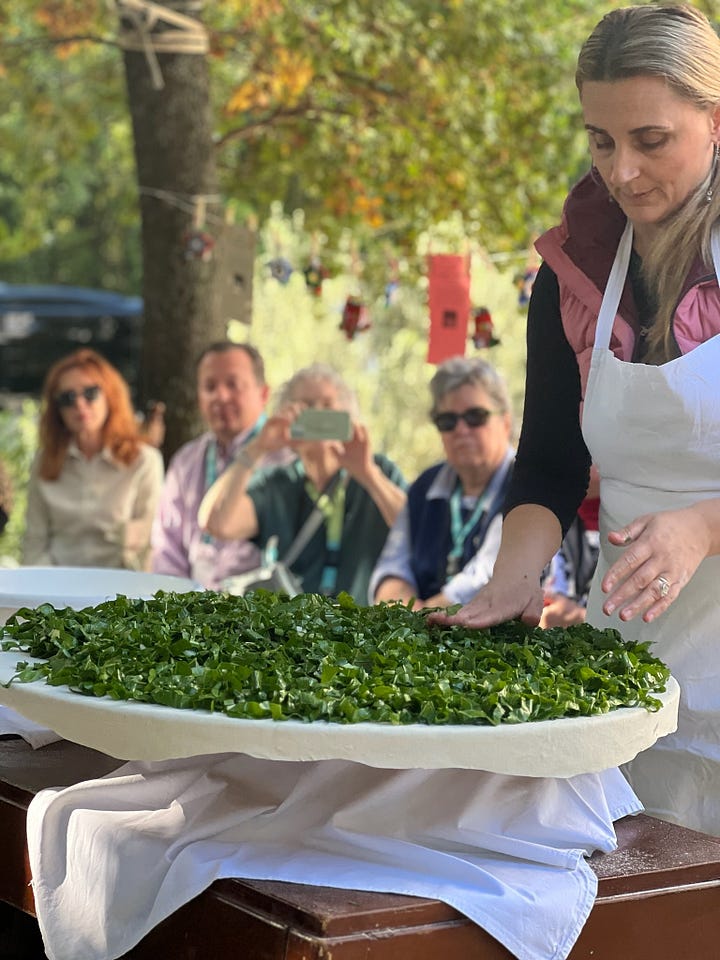

The Oldways Culinaria Soparnik experience was more than a “pinch-me” moment. Nikolina Radmilo Pivcevic, who demonstrated how to make Soparnik, captivated us with her stories — of her family, the war during the 1990s, and the importance of Soparnik. Roger Sands, writing in Forbes, noted that Soparnik illustrates the rustic beauty of Croatian culinary culture and is often used as a fasting meal and served on major religious holidays.
While no one who watched Nikolina may ever make a Soparnik as large as hers, this is definitely one of the Croatian old ways that will make its way into the kitchens and pizza ovens of those of us lucky enough to watch her make the giant Soparnik.
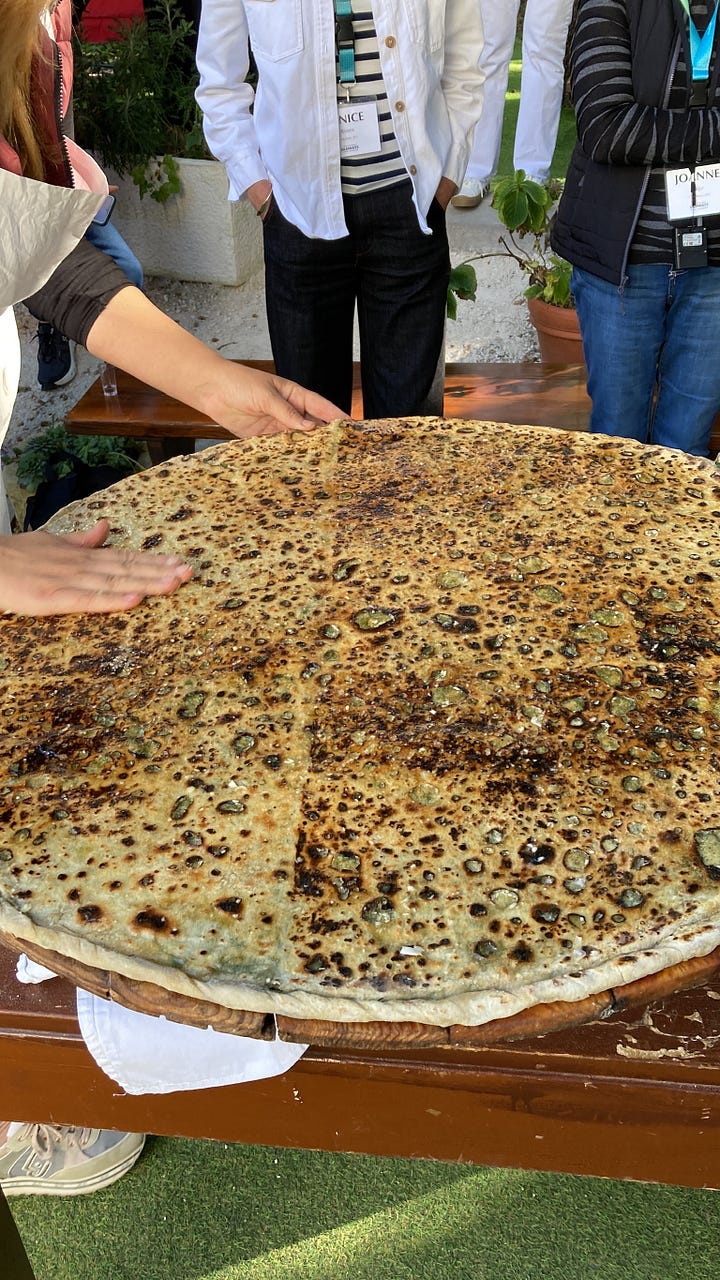
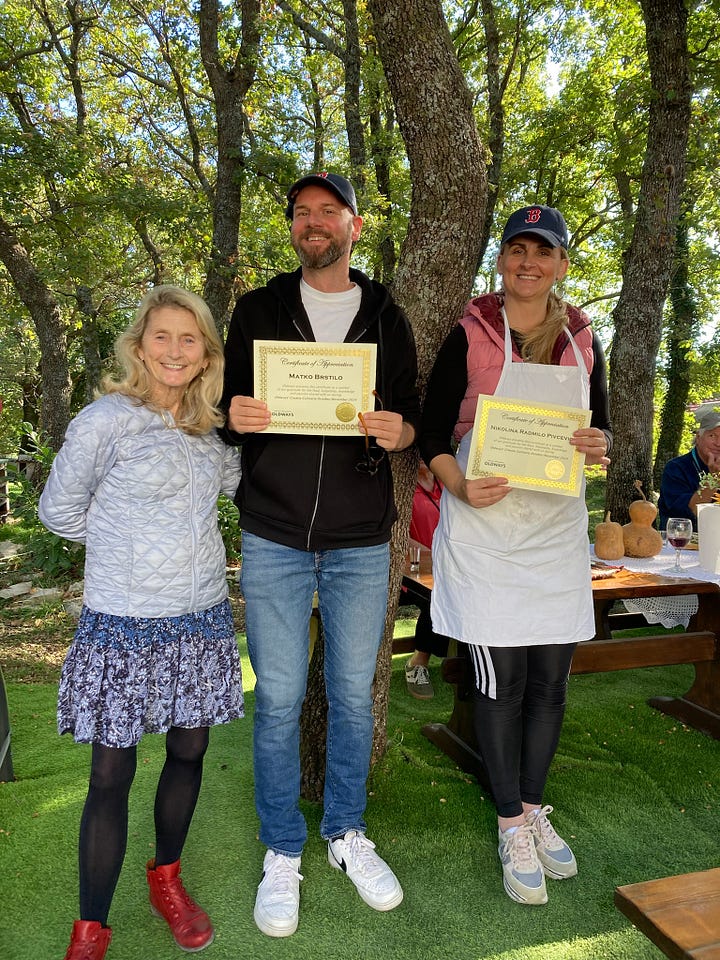
In case you are inclined to give Soparnik a try, here’s how Nikolina brings a pinch to the experience. She says, “the workshop is a celebration of community and tradition, so it makes you enjoy your creation paired with the finest local wines and accompanied by stories of our culinary heritage.”
This recipe is halved so that you can fit it in a pizza oven or your own oven.
Ingredients:
3 pounds Swiss Chard, finely chopped
1/2 onion, finely chopped
½ cup Extra virgin olive oil, divided into 2 parts
4 cups wheat flour
1 teaspoons salt
1 garlic clove, chopped
1 cup water
Instructions:
1. Make the dough, combining flour, salt, and water and let it rest for 1 hour
2. Meanwhile, mix the swiss chard and the onion and half of the olive oil
3. Preheat your oven to 475 degrees or start your pizza oven
4. After an hour, divide the dough into two equal pieces and roll each piece out – the dough should be very thin.
5. Put the swiss chard mixture on top of one layer of dough
6. Carefully put the second layer of dough on top of the swiss chard mixture and then crimp the sides
7. Cook as you would a pizza, watching to see when the top is browned
8. Rub the raw, chopped garlic on top of the cooked Soparnik, and sprinkle more olive oil on top.
9. Cut into diamond shapes and serve warm (or room temperature)
Recipe adapted from Nikolina Nikolina Radmilo Pivcevic. Photo courtesy of Oldways.
A Floating Oyster-Mussel Farm Restaurant
In order to experience the Croatian Dalmatian Coast, we drove along the Adriatic from Dubrovnik to Split, stopping in Mali Ston for an oyster-mussel experience.
Under a brilliantly sunny day, we boarded a boat in Mali Ston for a floating restaurant in the harbor. The restaurant was much more than just a restaurant – it was also a mini oyster and mussel farm.
We learned about the farming of oysters and mussels and why they are such a sustainable food choice. The pinch-me followed. We were served an amazing lunch of oysters and mussel stew – all the while enjoying the ebb and flow of the water.

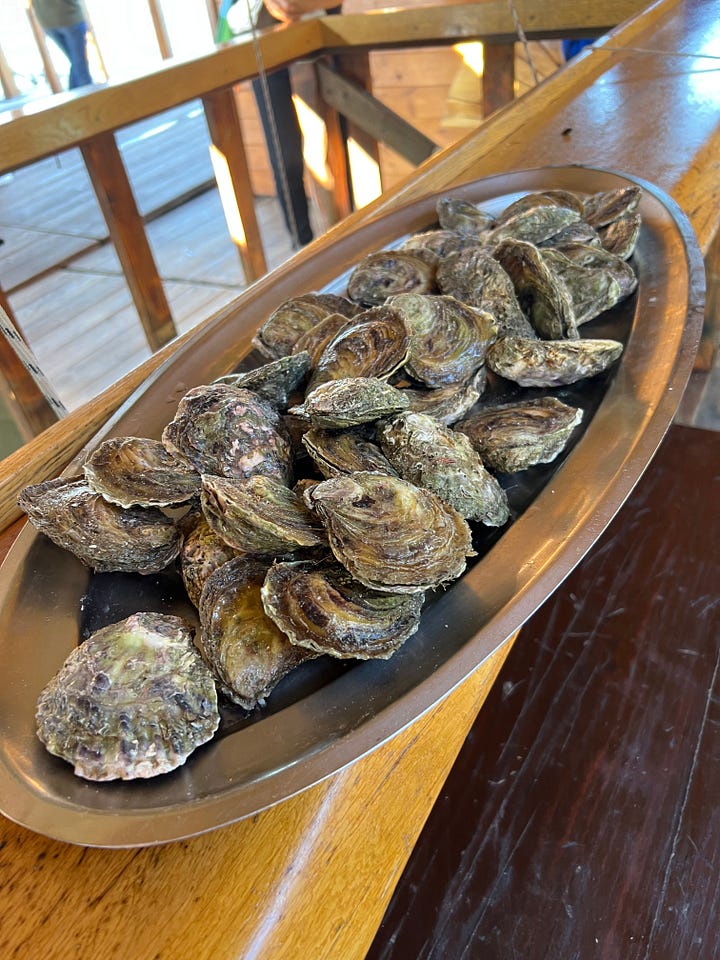
While we didn’t get a recipe, I’ve found one online, thanks to The Spruce Eats. As written on their website, “This Croatian Mussels recipe is known as dagnje na buzaru or školjke na buzaru. ‘Buzara’ in Croatian literally means ‘stew,’ but buzara-style cooking simply means that some type of shellfish or crustacean is cooked with olive oil, wine, garlic, breadcrumbs, and fresh herbs. At most, this easy recipe will take 40 minutes to prepare from start to finish, and it's especially delicious when served with a crusty baguette to sop up the cooking broth.” You’ll find it similar to Moules Marinères in France or Belgium.
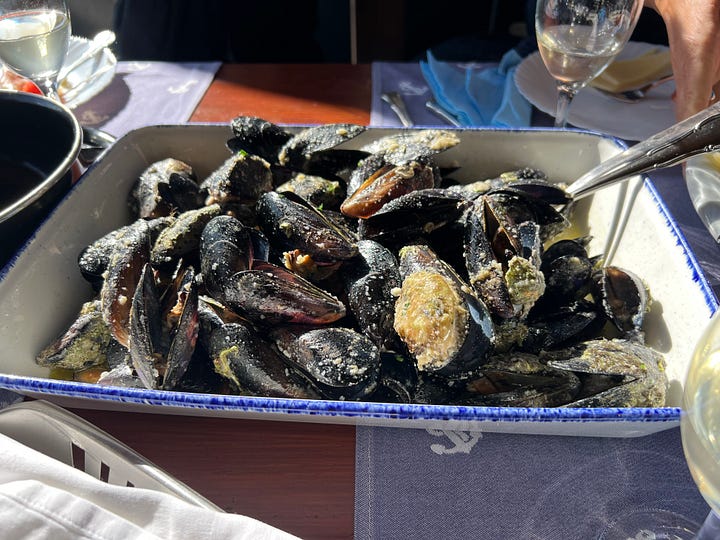
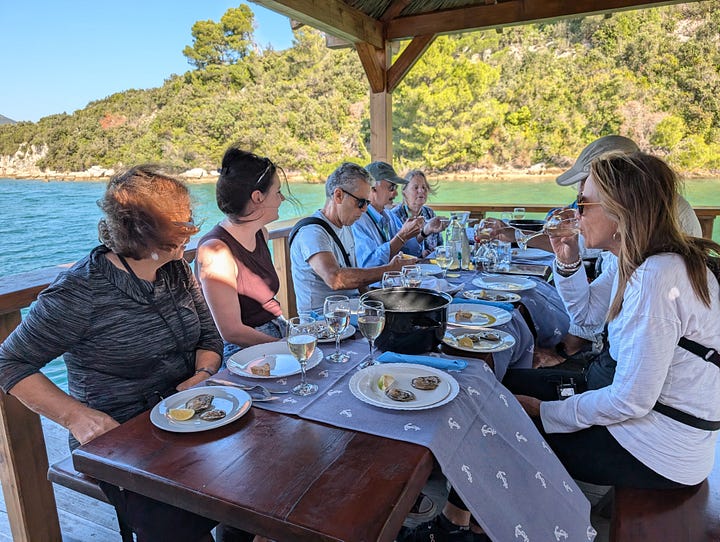
Olive Oil Museum on the Island of Brač
Having traveled in the Mediterranean region for many years, I’ve seen my fair share of olive oil production sites and exhibits. This one on Brač was particularly sweet, informative and pinch-worthy.
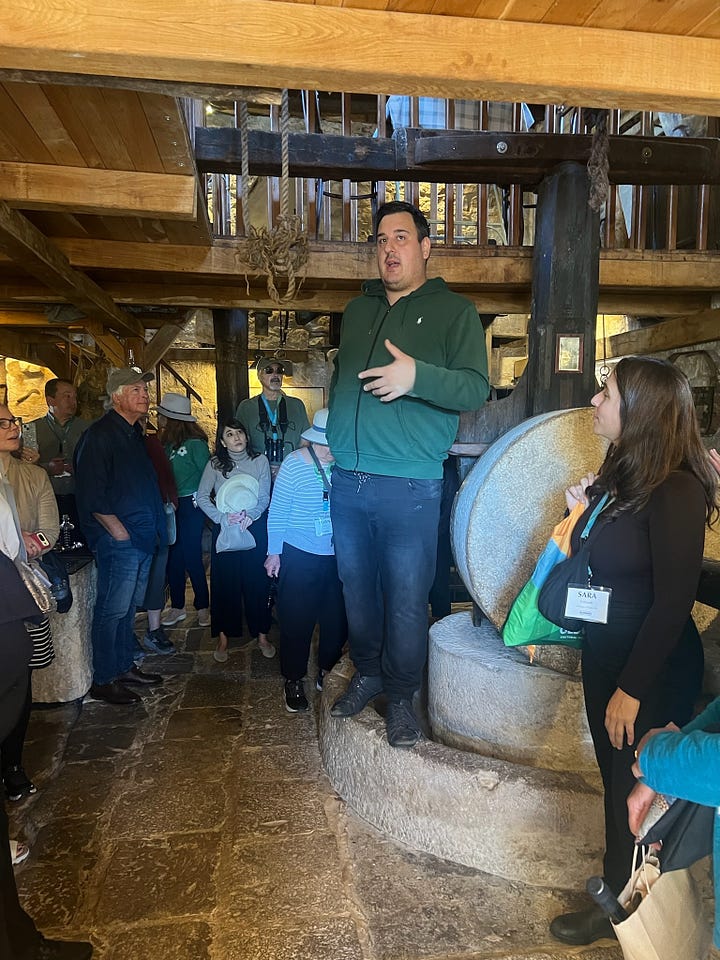
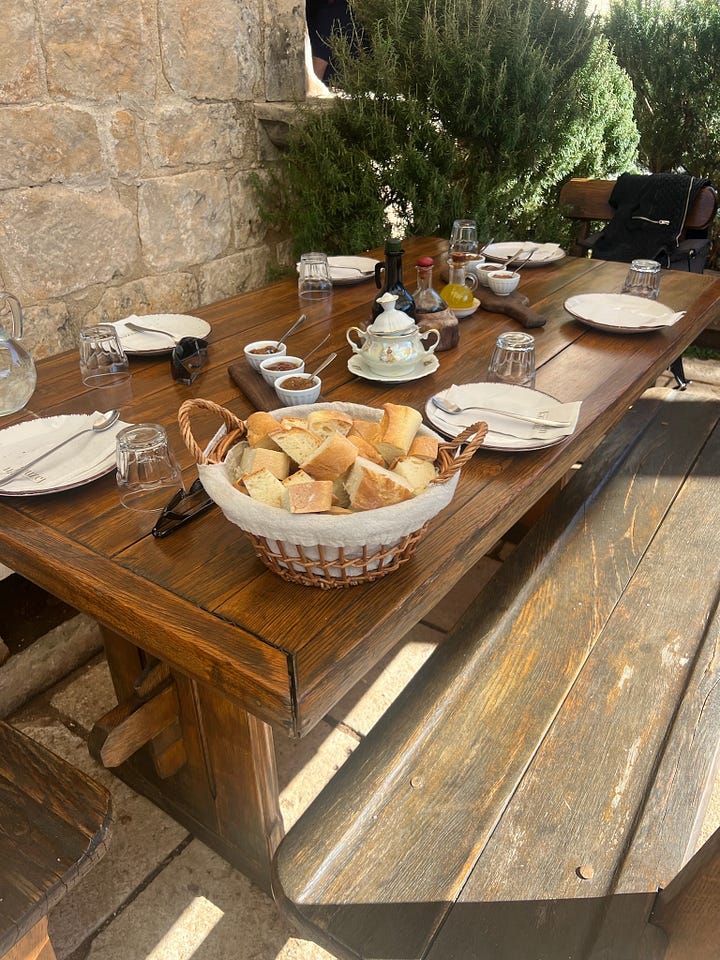
The family not only currently produces extra virgin olive oil, but they have also brought the past to the present by assembling an assortment of historical equipment to explain how olive oil is produced. I have seen other exhibits, but the people at this Olive Oil Museum tugged at all our heartstrings.
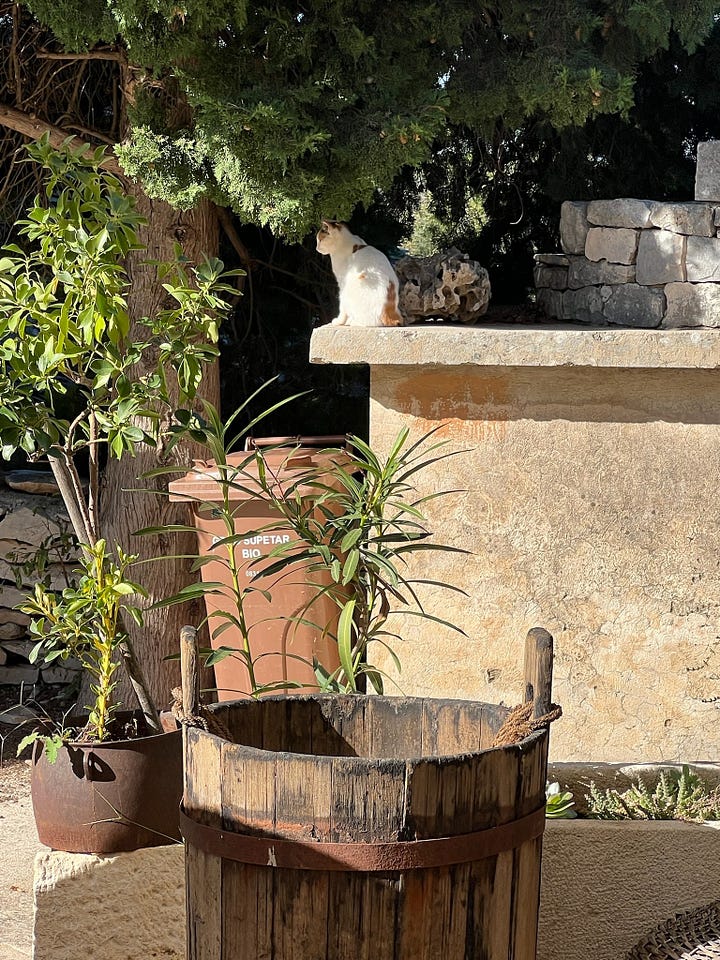
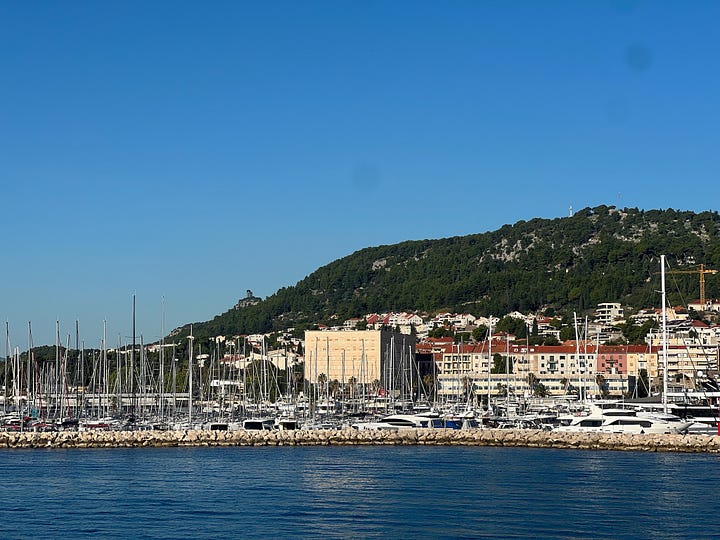
Sitting in the sunshine on a Friday morning with a variety of cats and dogs among us, we tasted three olive oils and several fruit liqueurs (myrtle being my favorite). Perhaps it was the sunshine or the general spirit of the family, the olive oil and bread, or the omnipresent fruit liqueur before noon – but whatever it was, it was another pinch-me day.
Croatia has hundreds of gorgeous, interesting places to visit and explore – even if you aren’t a Game of Thrones fan (it was filmed in Dubrovnik and near our oyster spot) – make sure to put Croatia on your bucket list. You will have an opportunity to bring some old ways home, and you never know, you might get pinched!
Sara Baer-Sinnott




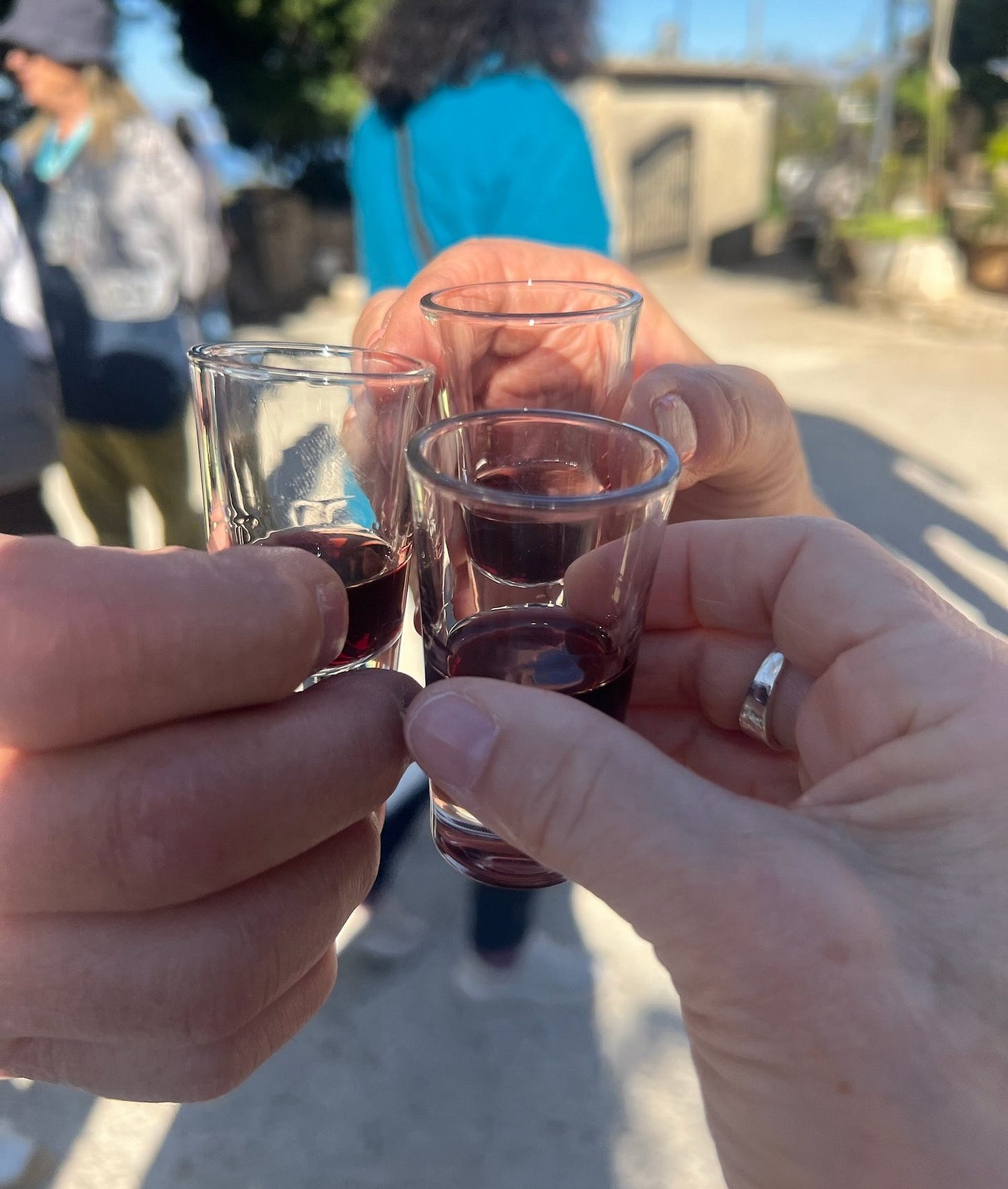
Croatia was an incredible edible fantasia! It has become one of my favourite destinations to eat around the world. From those seemingly-fictional super-sweet strawberry TREES to asparagus pesto pizza, fried sardines, just-hooked hake, Croatian Peka (with fall-off-the-bone lamb baked in the ashes), the mile-high Kremšnita Torta and Plavic wines. Wow. Thanks for the intro to that magnificent Swiss chard pie. I have a sudden pang for plum brandy!
Sara, I love reading about your travel adventures. It's such a delight to hear about the culinary experiences! Thanks for sharing.